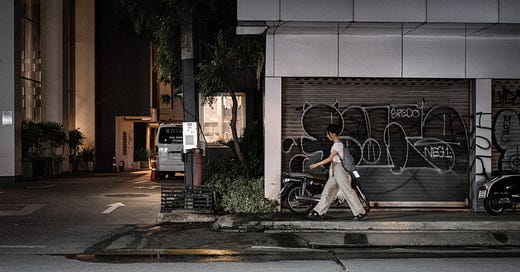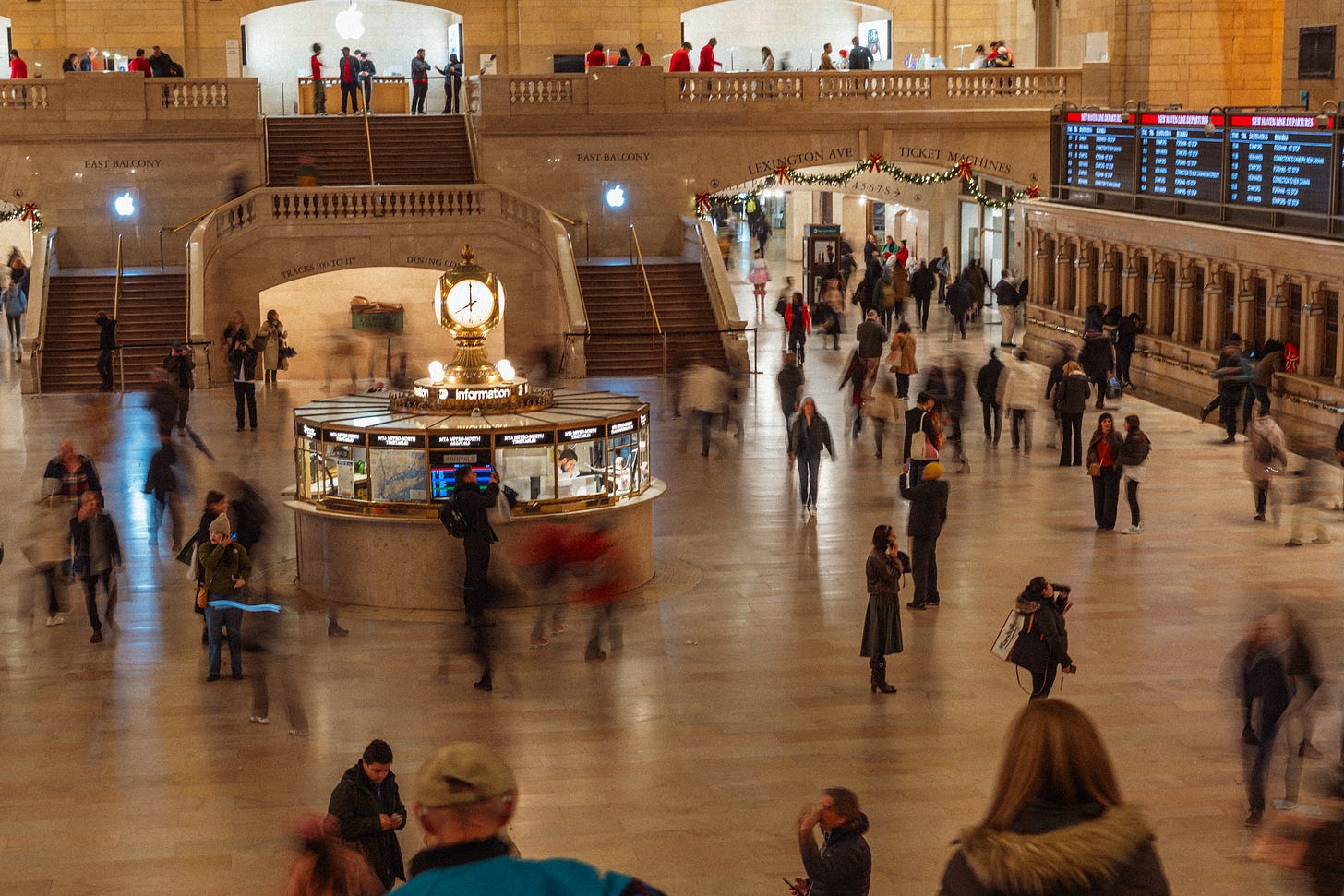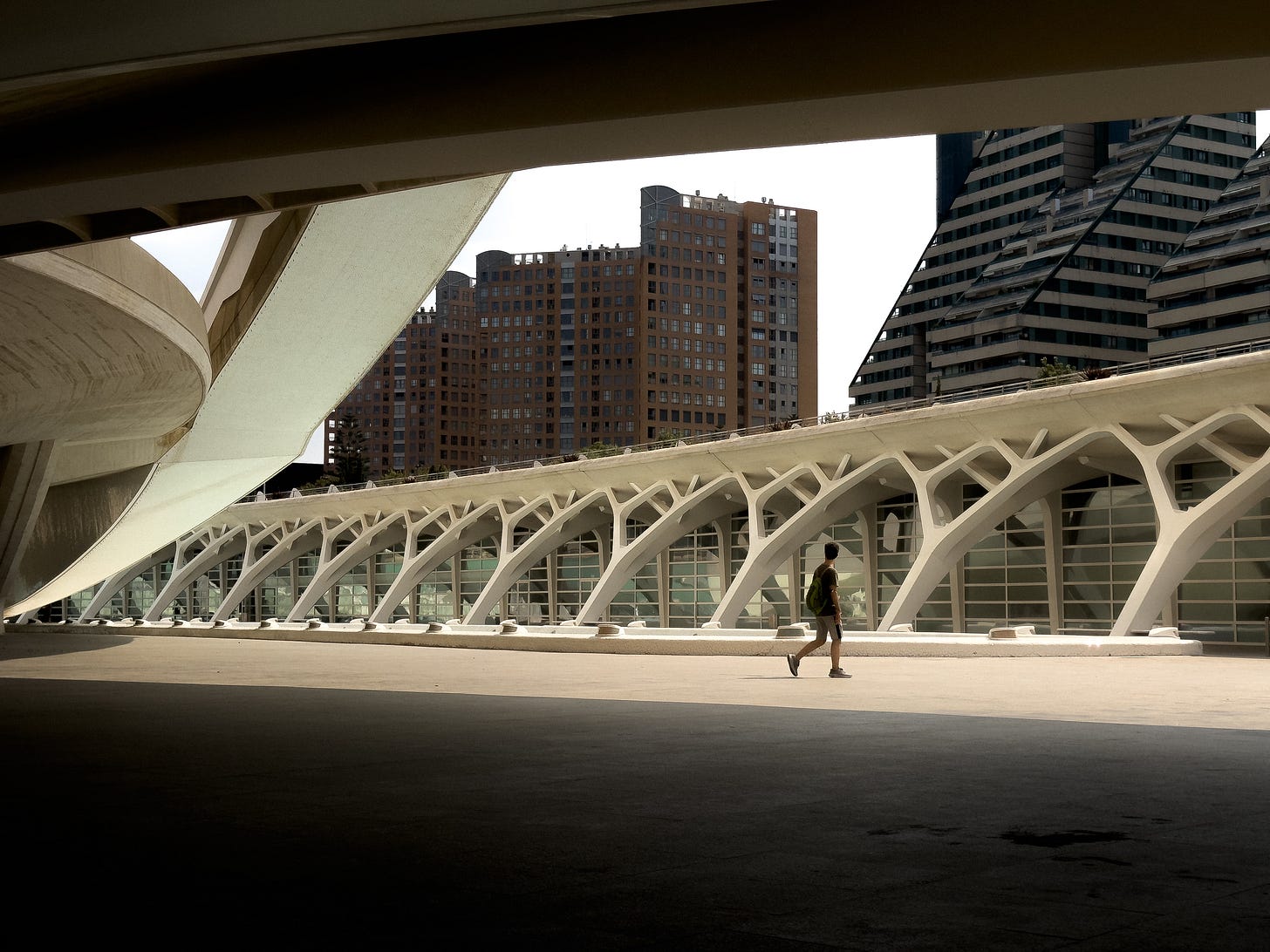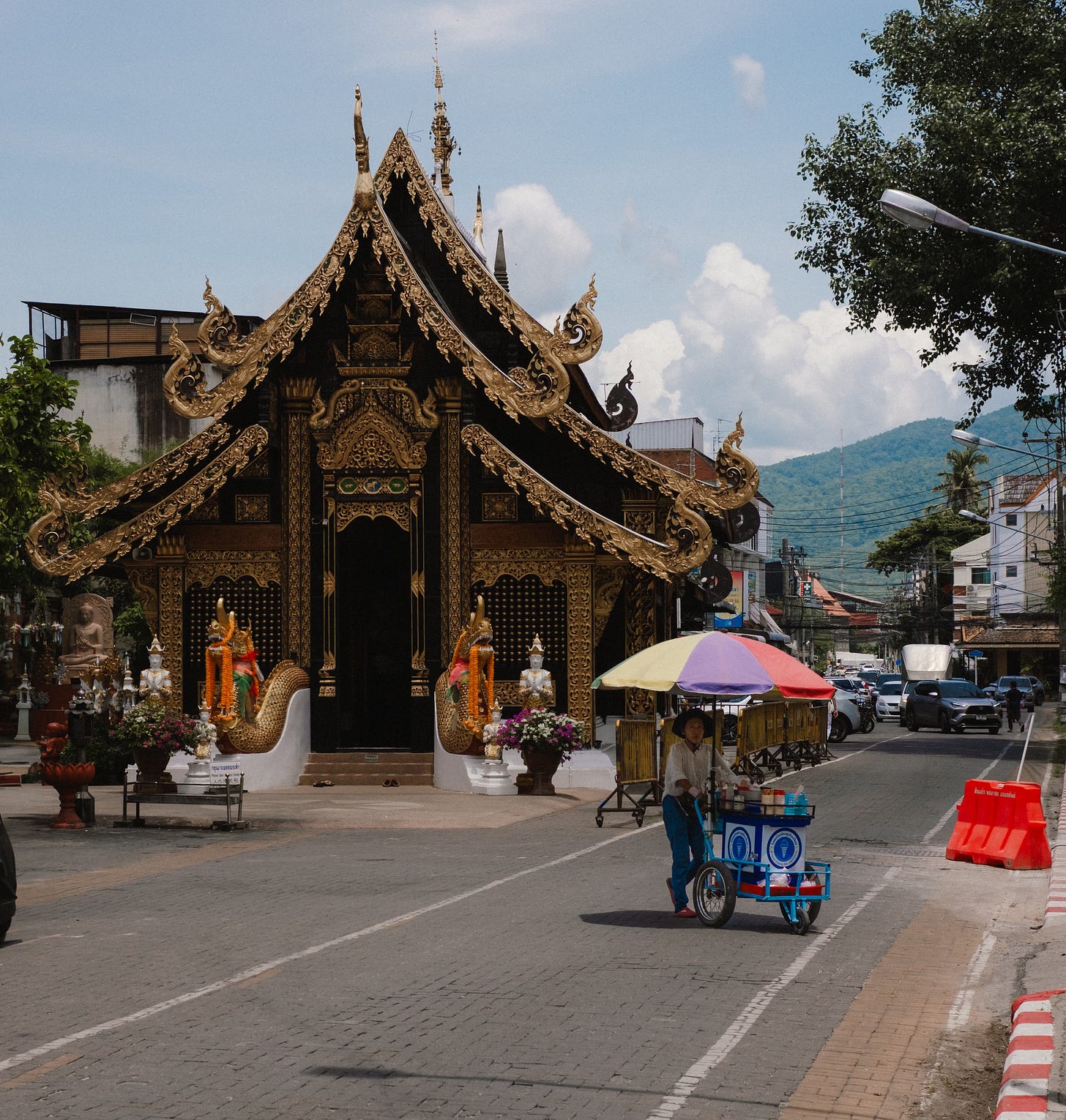Spend five minutes scrolling through Instagram, the new Foto app, or even street photography Youtube channels, and you’ll start to notice something: a lot of the shots feel... familiar. Lone figures crossing the street. Moody silhouettes framed by shadow. Neon signs reflected in rainy puddles. Don’t get me wrong these photos are beautiful. But after a while, they all start to blend together.
I’ve been guilty of it too. We all fall into patterns. It’s easy to default to what’s worked before, or what we’ve seen get the most attention. But lately, I’ve been wondering: why do so many street photos feel the same, and more importantly, how can we snap out of it?
The Patterns We Fall Into
Street photography has its own set of visual clichés. We gravitate toward certain subjects—like that lone person in the perfect beam of light or someone doing something wild with a colorful outfit. And honestly, it makes sense. I promise I’m not trying to call anyone out here because like I said I love these photos too but our brains really like patterns. We want to capture what’s recognizable, what fits into the “street photo” box we’ve internalized or seen before.
Social media plays a role too. The shots that rack up likes and shares start to influence what we think we should be shooting. Without even realizing it, we start chasing the same compositions, the same edit styles, the same moments, over and over. It’s hard to get away from and I get it.
But here’s the problem: after a while, it feels stale. It’s like playing the same song on repeat, you know all the notes, and none of them surprise you anymore.
Why It Happens
There’s nothing wrong with falling into a rhythm. In fact, it’s kind of human nature. We like what’s familiar because it feels safe. Especially when you’re out on the street, trying to make sense of chaos, it’s comforting to lean on what you know works. I think it’s honestly a great place to start every time you go out shooting.
We’re also constantly influenced by other photographers. Every image we scroll past adds a little mental weight to what we expect a “good” street photo to look like. It’s subtle, but it piles up. Pretty soon, you’re unconsciously recreating shots you’ve seen a hundred times without even realizing it. I was reading a thread by a famous photography YouTuber the other day where they were sort of complaining about this, and I thought to myself, I’m sure the people ‘copying’ your style don’t even realize they’re doing it also what the hell is YOUR style. Since when do people own styles of photography.. Moving on before I get into how annoyed this made me.
So let’s be honest: there’s also pressure, especially if you don’t get to shoot daily. You’ll go out wanting to come back with something strong, something worth sharing. That pressure nudges you toward the tried-and-true rather than risking something that might flop.
How to Break the Pattern
So how do you shake yourself out of it? How do you try to start seeing differently when your brain wants to default to the same beats?
Here are a few things you could try:
1. Impose Constraints
Force yourself to shoot with limits. Maybe you only photograph reflections but maybe only window or puddle reflections. Or you only shoot from the hip at a focal length you’re not confident with. Or you commit to one focal length the entire day and you don’t shoot from the hip. Constraints sound restrictive, but they actually push you to look harder. Suddenly, the street feels fresh again because you’re not leaning on old habits.
2. Flip Your Routine
Walk a different route. Go out at a time of day you usually avoid. If you always shoot downtown, try the suburbs. If you chase golden hour, head out in the harsh midday sun. Wake up earlier or go out much later, be safe of course. But new environments force new ways of seeing. If you can travel I will always recommend this too.
3. Tune Into the Rhythm of the Place
Whenever I’m in a new city, I have a rule: I spend the whole first day not worrying about taking photos. I’ll bring my camera, sure, but unless something really sparks, I barely touch the shutter. Instead, I focus on tuning into the rhythm of the place.
What do the streets sound like? How do people move? Where’s the tension, the stillness, the chaos?
I’ll pay attention to everything… Conversations, smells, foot traffic, the way light shifts across buildings, without the pressure to capture it. I know it might sound like nonsense, but letting myself fully absorb a place makes me see the story behind it more clearly. Once I feel that rhythm, the photos start to come naturally.
4. Shoot Without Shooting (Sharpen Your Eye Anywhere)
This one feels counterintuitive: go out with your camera, but don’t press the shutter.
Seriously—spend an hour walking, framing shots mentally, and resist the urge to actually take them. It’s less about the location and more about training yourself to see without the usual pressure to produce something “good.”
I’ve done this plenty of times in familiar spots, and it always sharpens my awareness. You notice how light moves, how people shift in and out of frame, the small, throwaway moments you’d usually miss.
Without the camera acting as a filter, everything feels a little more alive. And the next time you do pick it up, your eye is more tuned in.
“If I like a moment, I mean me, personally, I don’t like to have the distraction of the camera. I just want to stay in it.” - The Secret Life of Walter Mitty
5. Revisit the Boring Spots
Instead of chasing new locations, return to the same places and challenge yourself to find something fresh. It forces you to dig deeper—to notice light, gestures, and details you might usually overlook. This one I think is really the best tip because finding photos in boring spots is really hard, or maybe it’s not and I’m just a horrible photographer! But no matter what I think this tip is very useful.
The Bigger Point
Breaking the pattern isn’t about rejecting everything you’ve done before. It’s about staying curious. Street photography thrives on attention—not on formulas. The more awake you are to what’s actually happening around you (instead of what you think you should be shooting), the more interesting your work becomes.
And honestly, It’s more fun that way. You stop chasing the “perfect” moment and start being surprised by what you find, this is where personal style comes from in my mind.
Try This Next Time You’re Out
Here’s my challenge to you.. Next time you’re out shooting, pick one constraint or one experiment. Maybe it’s shooting from the hip. Maybe it’s walking a different path. Maybe it’s avoiding faces entirely.
See what happens. Worst case, you walk away with a bunch of weird shots and a fresh perspective.
Best case? You might break your own pattern and find something unexpected but the biggest point of all is to just have fun with it.
If you’ve made it this far, thank you so much for reading—I truly appreciate it! Writing and sharing these posts has been such an unexpected joy, and it’s all because of you. If you’d like to show some extra love, consider subscribing, upgrading to a paid subscription, or sharing this post with a friend. You can also find me on Instagram at @Lagomvisuals. Thanks for being here, and I can’t wait to share more with you soon!
Imagine we're still hanging out at our favorite cafe, cameras on the table, digging deeper into the conversation about photography. If you've enjoyed this little coffee break and feel like getting me a cortado with oat milk, hop over to my Buy Me a Coffee page. It genuinely keeps the conversation and creativity flowing. Cheers, friend!








Street photography is a great practice ground for honing your skills, but getting a really good photo is difficult. Notice how great names in street photography are known for just a handful of images. This difficulty in getting a true banger is the primary reason - I think - behind the onslaught of these repetitive frames in social media. The low hanging fruit as @tomminty put it. Also, Instagram makes you post whatever seems barely acceptable, to get that instant gratification, and the algorithm promotes certain types of photos that get the traffic.
My main gripe with street photography is that it is mostly about nothing.
If I didn't know better, I'd say you read my mind. I was preparing a similar article. But this one captures all the sweet spots, perfectly. I also take pictures without using the camera. It's just fun and helps to find those patterns you mention. Coincidentally, you are the third time this week that suggested taking pictures without actually taking one. When I studied photography in the early 80s, we were told to first shoot without film in the camera for portraiture. It was an attempt to loosen the atmosphere and to remove awkwardness.